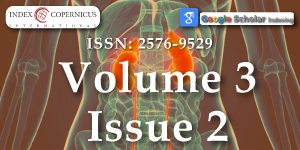Urinary NGAL incorporation into Renal Angina Index for early detection of acute kidney injury in critically ill children
Main Article Content
Abstract
Background and objectives: New AKI biomarkers (on the top of it NGAL biomarker) have demonstrated better performance for prediction of AKI in critically ill patients with heterogeneous illness. Renal angina index was recently reported to enhance prediction of severe AKI at the time of intensive care unit admission. This study tested the hypothesis that incorporation of uNGAL in patients with renal angina improves the prediction of severe AKI.
Design, setting, participants & measurements: In our study 53critically ill children admitted to the pediatric intensive care unit in Zagazig university hospital, Measurement of urine neutrophil gelatinase– associated lipocalin (uNGAL) was determined individually by ELISA kit and in combination with the RAI which is calculated in each critically ill child for severe AKI. Statistical analysis was done for these data.
Results: Individual uNGAL demonstrated marginal discrimination for severe AKI (area under curve [AUC]: NGAL, 0.877), little higher than prediction by RAI (AUC=0.847). Incorporation of uNGAL significantly added to the renal angina index AKI prediction (AUC=0.847, increased to 0.893).
Conclusion: This study shows that incorporation of uNGAL into the RAI improves detection ability of severe AKI in critically ill children.
Article Details
Copyright (c) 2019 Abu Zeid AM, et al.

This work is licensed under a Creative Commons Attribution 4.0 International License.
Susantitaphong P, Cruz DN, Cerda J, Abulfaraj M, Alqahtani F, et al. World incidence of AKI: a meta-analysis. Clin J Am Soc Nephrol. 2013; 8: 1482–1493. Ref.: https://bit.ly/2Qr8cJB
Himmelfarb J, Joannidis M, Molitoris B, Schietz M, Okusa MD, et al. Evaluation and initial of acute kidney injury. Clin J Am Soc Nephrol. 2008; 3: 962–967. Ref.: https://bit.ly/2QwOETZ
Khwaja A. KDIGO clinical practice guidelines for acute kidney injury. Nephron Clin Pract. 2012; 120: c179–184. Ref.: https://bit.ly/2Ma1KrH
Devarajan P. Biomarkers for the early detection of acute kidney injury. Curr Opin Pediatr 2011; 23: 194–200. Ref.: https://bit.ly/2HETM5C
Meersch M, Schmidt C, Van Aken H, Rossaint J, Görlich D, et al. Validation of cell-cycle arrest biomarkers for acute kidney injury after pediatric cardiac surgery. PLoS One. 2014; 9: e110865. Ref.: https://bit.ly/2wlELPO
Meyer M, Fink C, Roeger S, Apfaltrer P, Haghi D, et al. Benefit of combining quantitative cardiac CT parameters with troponin I for predicting right ventricular dysfunction and adverse clinical events in patients with acute pulmonary embolism. Eur J Radiol. 2012; 81: 3294–3299. Ref.: https://bit.ly/2W8HawL
Zappitelli M, Parikh CR, Akcan-Arikan A, Washburn KK, Moffett BS, et al. Ascertainment and Epidemiology of Acute Kidney Injury Varies with Definition Interpretation. Clin J Am Soc Nephrol. 2008; 3: 948–954. Ref.: https://bit.ly/2MdHoxK
Basu RK, Wang Y, Wong HR, Chawla LS, Wheeler DS, et al. Incorporation of biomarkers with the renal angina index for prediction of severe AKI in critically ill children. Clin J Am Soc Nephrol. 2014; 9: 654–662. Ref.: https://bit.ly/2I7sAvh
Bolignano D, Basile G, Parisi P, Coppolino G, Nicocia G, et al. Increased plasma neutrophil gelatinase-associated lipocalin levels predict mortality in elderly patients with chronic heart failure. Rejuvenation Res. 2009; 12: 7-14. Ref.: https://bit.ly/2Ww2ifz
Menon S, Goldstein SL, Mottes T, Fei L, Kaddourah A, et al. Urinary biomarker incorporation into the renal angina index early in intensive care unit admission optimizes acute kidney injury prediction in critically ill children: a prospective cohort study. 2016; 31: 586-594. Ref.: https://bit.ly/2wlNXUq





